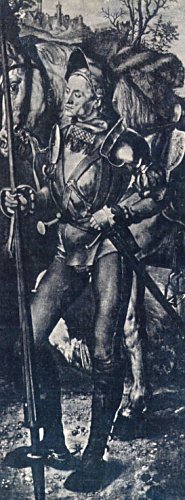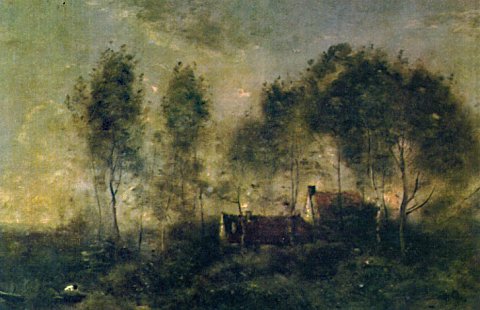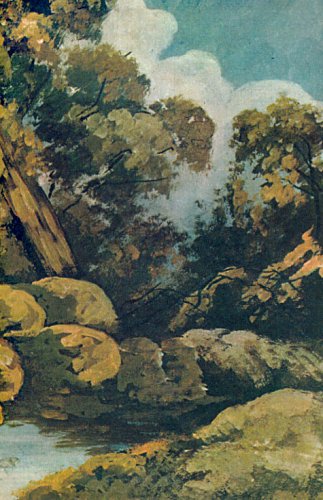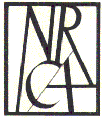| HOSTED BY |
A History of Art Forgery
At times, excessive reworking or remodeling of an artist's original art can cast doubt on its authenticity. The knightly figure of a saint below is traditionally thought to represent a member of the Paumgartner family which commissioned the triptych. Dürer set it off in statuesque repose against a dark background. When the Duke of Bavaria acquired the altarpiece in 1614 he had it repainted by his court painter Johann Georg Fischer. The restoration seemed advisable, but Fischer went far beyond mere restoring. He modernized the old-fashioned picture by painting out the saint’s attributes, substituting horse and landscape for the dark ground and placed a helmet on the knight’s cap. The Düreresque character of the addition is explained by the fact that Fischer made use of motives culled from other Dürer works. |
 |
 |
ABOVE LEFT: The Albrecht Dürer altar piece before removal of the ornamentation and repainting that been added to the original by Johann Georg Fischer in 1614. ABOVE RIGHT: St. Eustace. Paumgartner Altarpiece, Right Wing by Albrecht Durer. 1498. Restored to original state. Alte Pinakithek, Munich. |
| Some artist's works have been forged to such an extent that anything by them is subject to extreme scrutiny. In addition to Corot, artists that fall into this category include Van Gogh, Picasso, Dali, Miro, Chagall and dozens of others; particularly after the 19th century. |
 |
The Fisherman’s Hut is a typical example of Corot’s unique silvery manner in his paintings. A thousand “détrempes” — a technique akin to gouache, never used by Corot — were found in the possession of a French doctor after his death in 1923. The whole collection of Dr. Jousseaume numbered 2,414 spurious Corots: paintings, drawings and détrempes. None of these was contained in Robaut’s comprehensive catalog of Corot’s works, published in 1905.
To obscure
this damaging fact a mysterious story about Corot’s “secret
work” was invented and the legacy of Jousseaume thus turned
into a gold mine. The low quality of most of the “secret
works” would seem quite sufficient to prove their spuriousness;
however they did unaccountable damage to the artistic personality
of Corot, who is, unfortunately one of the most faked masters
on both sides of the Atlantic. |
 |
Landscape with Stream. Détrempe. Forgery passed off as a Corot. British Museum, London. The proliferation of fake Corot paintings in this country have sparked a succession of gibes including:
|
| Intro (1) (2) (3) (4) (5) (6) (7) (8) (9) (10) (11) (12) (13) (14) (15) (16) (17) (18) (19) (20) Look for updates to this exhibit every week. Also visit the companion to this exhibit: FABULOUS FAKES |
| Special thanks to people without whom this exhibition would not have been possible: Thea Eichler, NRCA; Billie Tucker, New Rochelle Library; Ivar Hyden, Backstreet Gallery and all the contributing artists. |
| Additional information about the availability of Fabulous Fakes, the History of Art Forgery or any of the works in the exhibition may be obtained by contacting The New Rochelle Council on The Arts by email or by calling 212-529-2025. More information on the NRCA can be found by connecting to the internet and clicking here. |
 Fabulous Fakes and A History of Art Forgery © J. L. Dolice, 2001, 2003.
|
| All images in this presentation may not be copied, stored in any electronic retrieval device or used in any way without permission in writing. ISBN 0-935901-51-5. |
| Art Forgery | Art Haus |